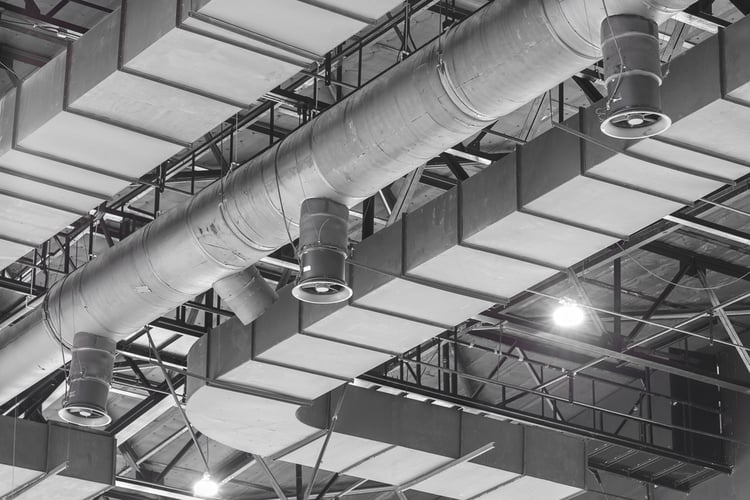Electrical rooms are very important for building operations, providing a hub to supply electrical power to equipment. These rooms also contain key protection systems and, in larger installations, often include transformers. The main advantage of a well-designed electrical room is to provide a central location where technical team members can manage and maintain the building's power systems.
In general, electrical installations must meet a series of requirements in terms of load served, clearances for technical personnel and how electrical installations interact with other building systems. There are also specific application requirements, but the general specifications apply to the vast majority of projects.
Obtain an electrical room design that meets NEC and local codes.
General requirements for electrical rooms are covered in Article 110 of the National Electrical Code (2011 Edition). This blog post references some requirements, but is intended to be informative and should not be used in place of the NEC. The best recommendation is to work with qualified design professionals who are familiar with all codes and standards applicable to each project.
Importance of load calculation
 The input service capacity of electrical installations is determined based on load calculation. Accuracy is very important: undersized service wiring is dangerous and can lead to voltage problems, but oversized conductors represent an unnecessary expense.
The input service capacity of electrical installations is determined based on load calculation. Accuracy is very important: undersized service wiring is dangerous and can lead to voltage problems, but oversized conductors represent an unnecessary expense.
The service terminal box is also selected based on load calculation and is normally installed on an external wall. This simplifies the installation of service wiring, providing a convenient but protected entry into the building.
Energy efficiency measures can drastically reduce the electrical load of a building, once their individual contributions are added together. This is reflected in reduced wire ampacity and transformer kVA, allowing service equipment to be scaled down.
Workspace and time off
 Work space is another important consideration: it can be measured left to right, right to left, or relative to the centerline of the equipment. NEC Table 110.26(A)(1) provides the minimum clearances required for work space in an electrical room, and the following applies in the case of 0-600V installations:
Work space is another important consideration: it can be measured left to right, right to left, or relative to the centerline of the equipment. NEC Table 110.26(A)(1) provides the minimum clearances required for work space in an electrical room, and the following applies in the case of 0-600V installations:
- 3 feet between insulated materials
- 3 ½ feet between grounded equipment
- 4 feet between exposed live parts
A key requirement is to provide enough space for all doors to open at least 90°. This influences the width, depth and height of workspaces. Please note that communications systems are not subject to the same workspace requirements as electrical installations – in which case other NEC requirements apply, as well as other standards specific to the IT industry.
Although different equipment may have overlapping workspaces in some cases, they must always be kept unobstructed. Placing other equipment in workspaces or using it for storage is not permitted by code.
Electrical rooms must also have appropriately sized inputs/outputs , which must always be kept free of obstructions. If the service capacity is greater than 1200 Amps, the following requirements apply:
- Two outputs must be provided.
- Doors located within 25 feet of the work space must open in the direction of egress and must be capable of being opened with simple pressure (anti-panic hardware).
For installations where the service input is greater than 1000 kVA, at least 7 feet of clearance between different equipment is required. A minimum of 5 feet of clear space is required between the equipment and walls.
Coordination with other construction systems
 There must be no mechanical or hydraulic equipment below and above electrical equipment to avoid creating unnecessary risks. If any accessory passes above an electrical panel, it must be equipped with a drip pan.
There must be no mechanical or hydraulic equipment below and above electrical equipment to avoid creating unnecessary risks. If any accessory passes above an electrical panel, it must be equipped with a drip pan.
Ideally, the hydraulic riser diagram and electrical layout are designed in coordination to avoid location conflicts between its components. This becomes much simpler if the design is carried out with MEP modeling software, where all teams work on the same 3D model and location conflicts are evident – the traditional 2D design approach does not provide this visibility.
It is important to ensure that fire alarm disconnect switches are clearly visible in the electrical room, if applicable. Please note that special fire protection requirements apply to electrical installations and compliance is very important for quick project approval and safe operation.

